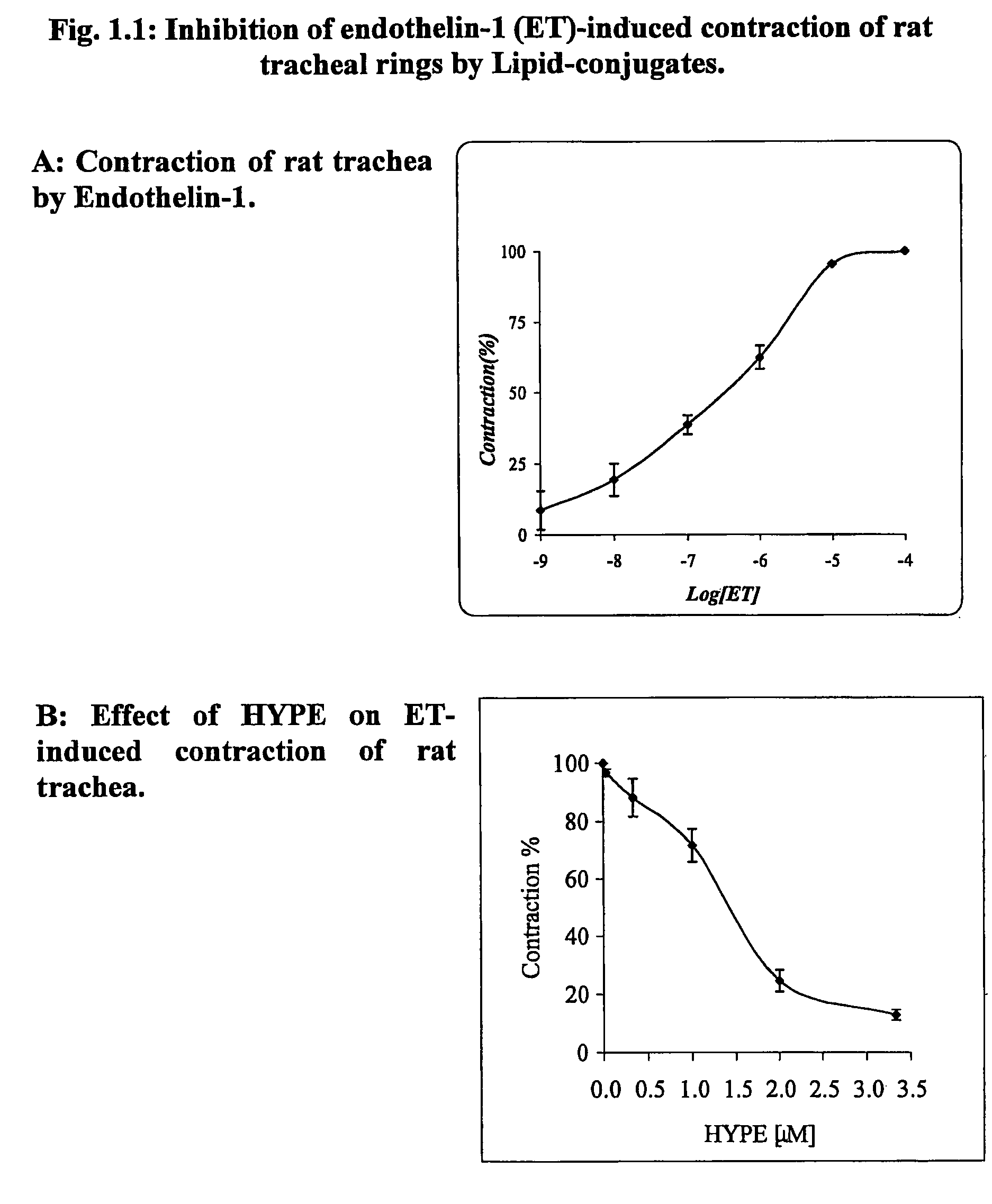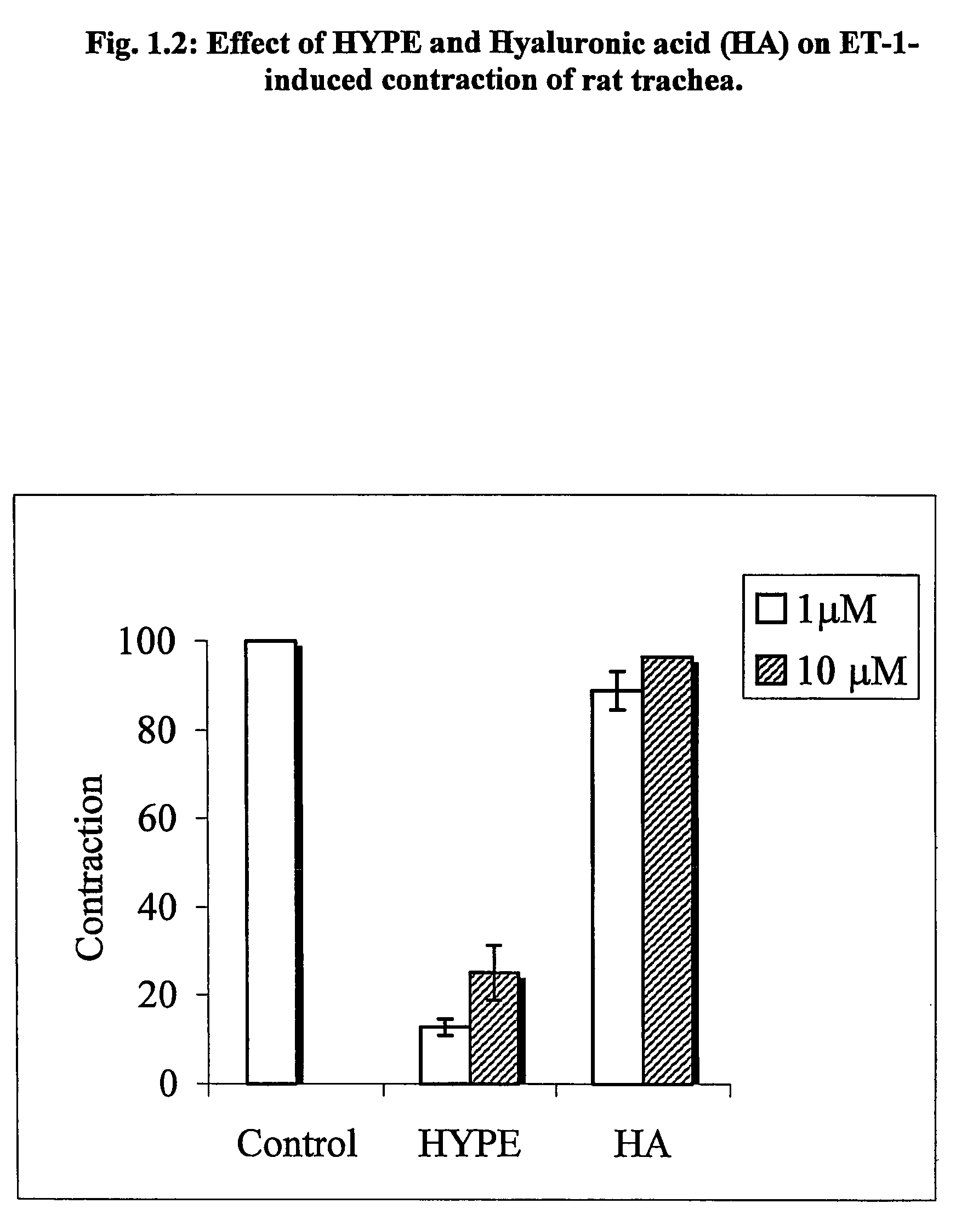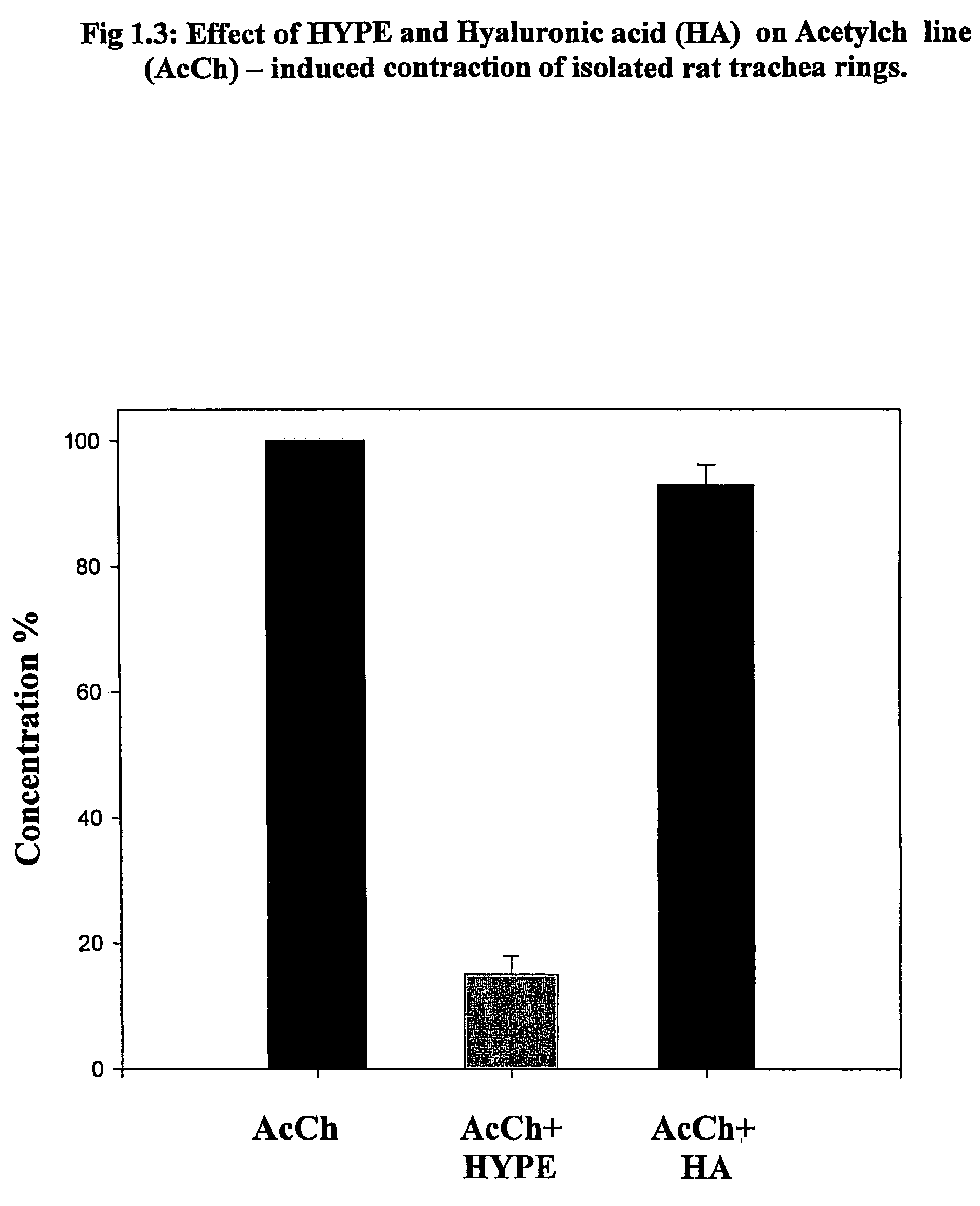Use of lipid conjugates in the treatment of diseases
a technology of conjugates and lipids, applied in the direction of aminosugars, sugar derivative preparations, pharmaceutical non-active ingredients, etc., can solve the problem that the medical use of these compounds was necessarily limited
- Summary
- Abstract
- Description
- Claims
- Application Information
AI Technical Summary
Benefits of technology
Problems solved by technology
Method used
Image
Examples
example 1
Obstructive Respiratory Disease
[0341]The Lipid-conjugates are effective in the treatment of obstructive respiratory disease. This is demonstrated for asthma in the Experiments 1–8 below. In asthma, the impeded airflow is due to airway obstruction which is the result of constriction and obstruction of luminal vessels of the lungs. One widely-accepted experimental system to investigate airway constriction is to induce smooth muscle preparations, isolated from airways, to contract in the absence and presence of the drug. Another widely-accepted test of anti-asthma drug action is to use live animals which have asthma. This disease is present in animals which have been sensitized to an antigen and which can be monitored for exacerbation and recovery from asthmatic breathing using a body plethysmography.
[0342]In Experiments 1.1–1.3, the muscle preparation (tracheal rings) was isolated from rats and in Experiment 1.4–1.5 from guinea pigs. Muscle contraction is measured by attachment of the...
example 2
Intestinal Injury: Colitis and Crohn's Disease
[0357]The Lipid-conjugates are effective in the treatment of mucosal layer damage due to gastrointestinal tract disease. This is demonstrated in Experiments 2.1–2.4 Colitis and Crohn's disease are two examples of digestive tract disease in which the tissue barrier which lines the tract is damaged. One commonly accepted model of GI mucosal disease of this type is the damage to the physiological lining of the intestines produced in rodents which consume either high doses of the anti-inflammatory drug indomethacin (Crohn's disease), the toxin trinitrobenzene sulfonic acid (TNBS) (colitis), or the bowel irritant known as dextran sulfate sodium salt (DSS) (colitis). For experimental protocols see Materials and Methods.
[0358]Experiment 2.1: Amelioration of small intestine damage induced by indomethacin: Indomethacin (Sigma, St Louis, Mo.) a cyclooxygenase inhibitor used for induction of experimental gut injury in animal models, was administere...
example 3
Central Nervous System (CNS) Insult
[0370]The Lipid-conjugates are effective as neurotoxic agents, preventing tissue damage following physiological insult to the central nervous system. This is demonstrated in Experiments 3.1–3.10. Ischemic stroke, trauma, infection, cancer metastases, and degenerative disease exemplify physiological insults in which brain tissue injury may be severe and irreversible. Tissue injury typically evokes a myriad of physiological responses to stress, which in the central nervous system take the form of chemical substances released by support tissue. However, an excess of one, or more, of these potentially neurotoxic ‘wound’ chemicals may serve to further disrupt the healing process and contribute to the brain tissue damage. Commonly accepted models for assessing the neuroprotective ability of a new drug employ preparations of brain matrix cells (e.g., glial cells), neurotransmitter-releasing cells (e.g., PC12 cells), and migratory blood cells (macrophages ...
PUM
| Property | Measurement | Unit |
|---|---|---|
| Mass | aaaaa | aaaaa |
| Fraction | aaaaa | aaaaa |
| Fraction | aaaaa | aaaaa |
Abstract
Description
Claims
Application Information
 Login to View More
Login to View More - R&D
- Intellectual Property
- Life Sciences
- Materials
- Tech Scout
- Unparalleled Data Quality
- Higher Quality Content
- 60% Fewer Hallucinations
Browse by: Latest US Patents, China's latest patents, Technical Efficacy Thesaurus, Application Domain, Technology Topic, Popular Technical Reports.
© 2025 PatSnap. All rights reserved.Legal|Privacy policy|Modern Slavery Act Transparency Statement|Sitemap|About US| Contact US: help@patsnap.com



